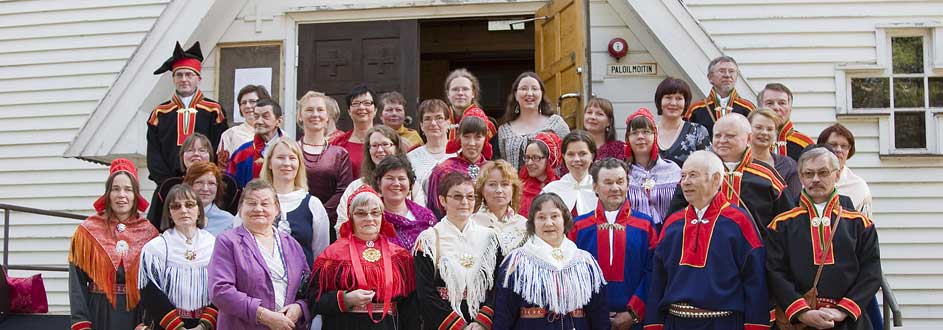The courses are in sequence, i.e. each builds on the one before it. The classroom-based teaching consisted of lessons, practical exercises and independent student work.
Order reveals relative amount of use; e.g. Finnish-AS means that Finnish is used more than AS, and (Finnish) means that Finnish is used only as needed.
| Course | Study points | Expected learning outcomes related to content | Teaching languages |
|---|
| Beginning course | 5 | The student knows the basics of AS grammar and pronunciation as well as the most essential vocabulary related to everyday life. S/he is able to carry out simple conversations and read elementary texts. | Finnish - AS |
| Continuing course | 4 | The student demonstrates deepened knowledge of AS grammar, pronunciation and vocabulary. S/he is able to discuss more complicated matters related to everyday life and can write elementary texts about familiar topics. | AS - Finnish |
| Phonetics and morphology | 9 | The students demonstrates familiarity with the following specific features of AS phonetics: halflong consonants, stretched vowels, regular vowel changes in the 1st and 2nd syllables, length of diphtongs and consonant changes beyond the 2nd syllable. The student can apply systematic AS consonant gradation and shortenings/ lengthenings of consonants and vowels related to consonant gradation. The student demonstrates an understanding of AS morphology by correctly inflecting common nouns and verbs. | AS - Finnish |
| Introduction to AS research | 2 | The student demonstrates familiarity with AS researchers and can describe the most important AS linguistic research. S/he can describe AS usage, using linguistic terms, especially AS linguistic terminology. | AS |
| Development of literary language | 2 | The student can describe the history of AS as a literary language and its development from the first written texts in the 19th century until present, with particular focus on the 19th and the 20th centuries. | AS |
| Syntax | 6 | The student can parse AS by analysing the syntactic and semantic roles of the constituents. S/he can identify the morphosyntactic differences between Finnish and AS. | AS |
| AS texts and modern literature | 3 | The student demonstrates familiarity with modern written AS and with narrative traditions (oral and written), and can describe the development of the written literary language. | AS |
| Writing | 3 | The student writes AS correctly, observing orthographic conventions, using appropriate sentence structure and employing a variety of text types. S/he can produce linguistically and stylistically highly proficient texts. | AS |
| Word formation | 4 | The student applies appropriate rules of word formation in her/his oral and written AS, with attention to compounding, derivating and loaning words. | AS |
| Translation | 5 | The student is able to describe the translation process thoroughly, solve basic translating problems, attend to the outcomes of the translation process, i.e. produce a proper translation from Finnish to AS, and critically analyse completed translations. | AS |
| Language planning | 4 | The student is able to provide advice in AS. S/he is able to answer questions with regard to terminology and to address other issues concerning the language planning of a minority language. | AS |
| AS dialects | 2 | The student can apply methods and findings of (regional) dialect research in AS to plan, carry out and report on an investigation in this area. | AS |
| Independent study week | 1 | The student expands her/his familiarity with AS terminology in his/her own profession. | AS |
| Study points in total | 49 | |


